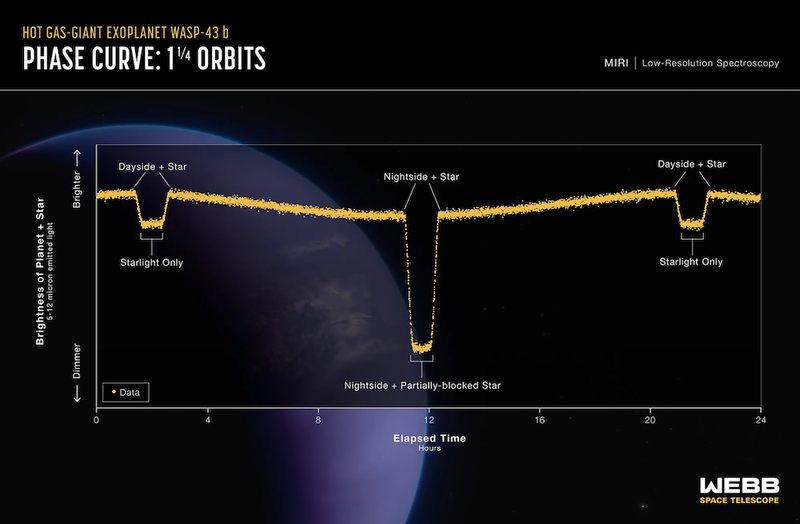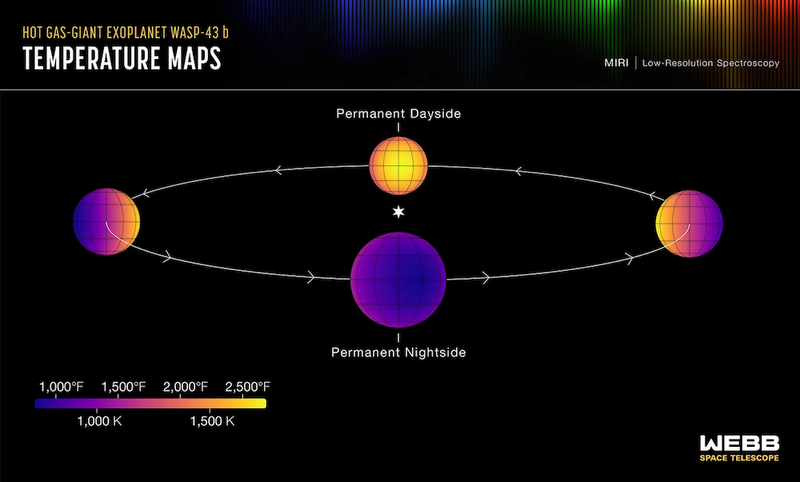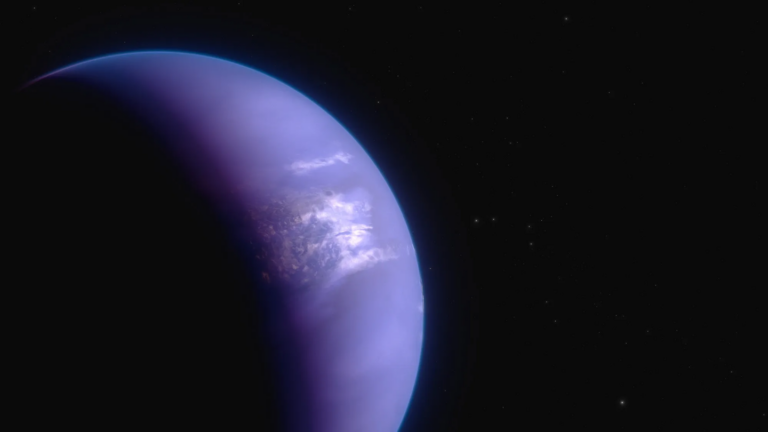JWST is studying ‘Hot Jupiter’ an exoplanet situated at a great distance that possesses temperatures high enough to produce iron.
Blazing temperatures and supersonic winds rule WASP-43b.
With impressive level of clarity, the James Webb Space Telescope of NASA not only managed to capture some of the best pictures of our cosmic reality, but also helped an international group of astronomers figure out the weather of the distant stars as well. Its first subject, WASP-43b, seems to follow the footsteps of another WASP, which has a name that fits perfectly its extremely metal sound.
One exoplanet astronomers discovered is WASP-43b. They first noticed it back in 2011 and only could be able to access some potential conditions observed using Hubble and the Spitzer telescopes which are not in use anymore. To be frank, however, we could not but conclude that this planet must be super hot. According to the findings of our calculations, this cosmic object is the most close to its sun. Separation of the distance between them is not more than 1/25th of Mercury being from the sun. WASP-43b in fact is the object that is always waist locked in its orbit, with hair side of the planet either facing the star or darker, being the other side.

However, what is put to doubt is its discovery – the distance of 280 light-years distance from us and the direct location beside its star – makes the WASP-43b exploration with the help of the available telescopes nearly impossible. To obtain a better view, the scientists utilized the WASP-43 system’s Mid-Infrared Instrument (MIRI) to determine the most obscure changes to the faintness of the system every 10 sec. for the 24 hours.
“We studied all the phases of Venus’ orbit and determined the temperature on both sides of the planet which describes a cycle when one hemisphere is permanently lighted in the period of a month from April to October, and the other hemisphere is in darkness until the orbit goes back to the same position one year later.” “… in that sense we could carve a draft of temperature across the planet. ”- said by Taylor Bell, a researcher at the Bay Area Environmental Research Institute and the lead author of a study published yesterday in Nature Astronomy in the announced announcement on Tuesday
Very few of them can be this hot to breach the temperatures where iron smelt, such as WASP-43b, which has a dayside average of 1300 degrees Fahrenheit. There, where temperatures on the day side hover around 1,650 degrees Fahrenheit and night side temperature is around 600 degrees Fahrenheit, that’s still far from the melting point for many metals.
The wider view MIRI’s mid-infrared light data has (which was supported by the additional data from other telescopes and 3D modeled climate modeling) was used to gauge water vapor levels in the vicinity of the exoplanet. This data will help to know the actual values of the WASP-43b’s clouds, whether they are thick or thin and their height.

The result of the data transmitted by the light showed something surprising about the gas giant – methane is absent completely as astronomers have been anticipating and at least many of them expected to be there detectable. It is understood that winds at that speed, corresponding to almost 4,000 mph, are able to limit any chemical reactions that produce detectable metric levels.
“Using Hubble, we just acquired a clear image on the dayside. Water vapor can be identified both on Hubble and Spitzer where there might be clouds on the nightside, Hubble said on Tuesday.” “However, it was very clear that we required more precise readings by Webb, particularly accuracy in measurement of the weather, cloud cover, winds, and other properties of atmosphere right all over the planet.”
Do not forget to share your opinion with us to provide you with the best posts !




0 Comments